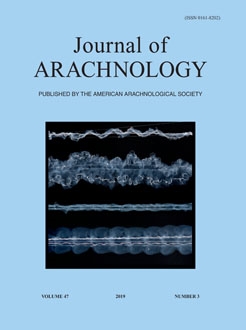Despite recent interest, there still is relatively little known about the ecology and physiology of diel and circadian rhythms in spiders. However, previous work on spiders suggests that there is a striking amount of variation in circadian period both among, and within, species, when compared to model organisms. Whereas previous studies of behavioral rhythms in spiders focused on females, here we describe the diel and circadian patterns of locomotor activity in male Parasteatoda tepidariorum (C. L. Koch, 1841) (Theridiidae). We found that the males showed mostly nocturnal activity under a light:dark cycle, with activity peaking very early after lights off and steadily declining to near zero just prior to lights on. Under constant darkness most individuals showed significant circadian rhythmicity with a mean free-running period of about 21.2 h. Though not the shortest average free-running period described for spiders, being so out of resonance with the 24 h solar day strains conventional circadian rhythm theory. Our data also suggest that the phase angle of entrainment for locomotor activity is in the mid-to-late photophase, but that activity may be masked by light. Of particular note is that both the diel and circadian activity patterns reported here for male P. tepidariorum are similar to those reported elsewhere for females of the species. This study deepens our understanding of the nature and variation in circadian rhythm in spiders and builds a case for further developing spiders as a model system for research integrating the fields of chronobiology and ecology.
How to translate text using browser tools
16 December 2019
Diel and circadian rhythms of locomotor activity in male Parasteatoda tepidariorum (Araneae: Theridiidae)
Mattea Garmany,
Darrell Moore,
Thomas C. Jones
ACCESS THE FULL ARTICLE

The Journal of Arachnology
Vol. 47 • No. 3
November 2019
Vol. 47 • No. 3
November 2019
Behavioral rhythm
chronoecology
circadian clock
circadian masking
wild clocks




